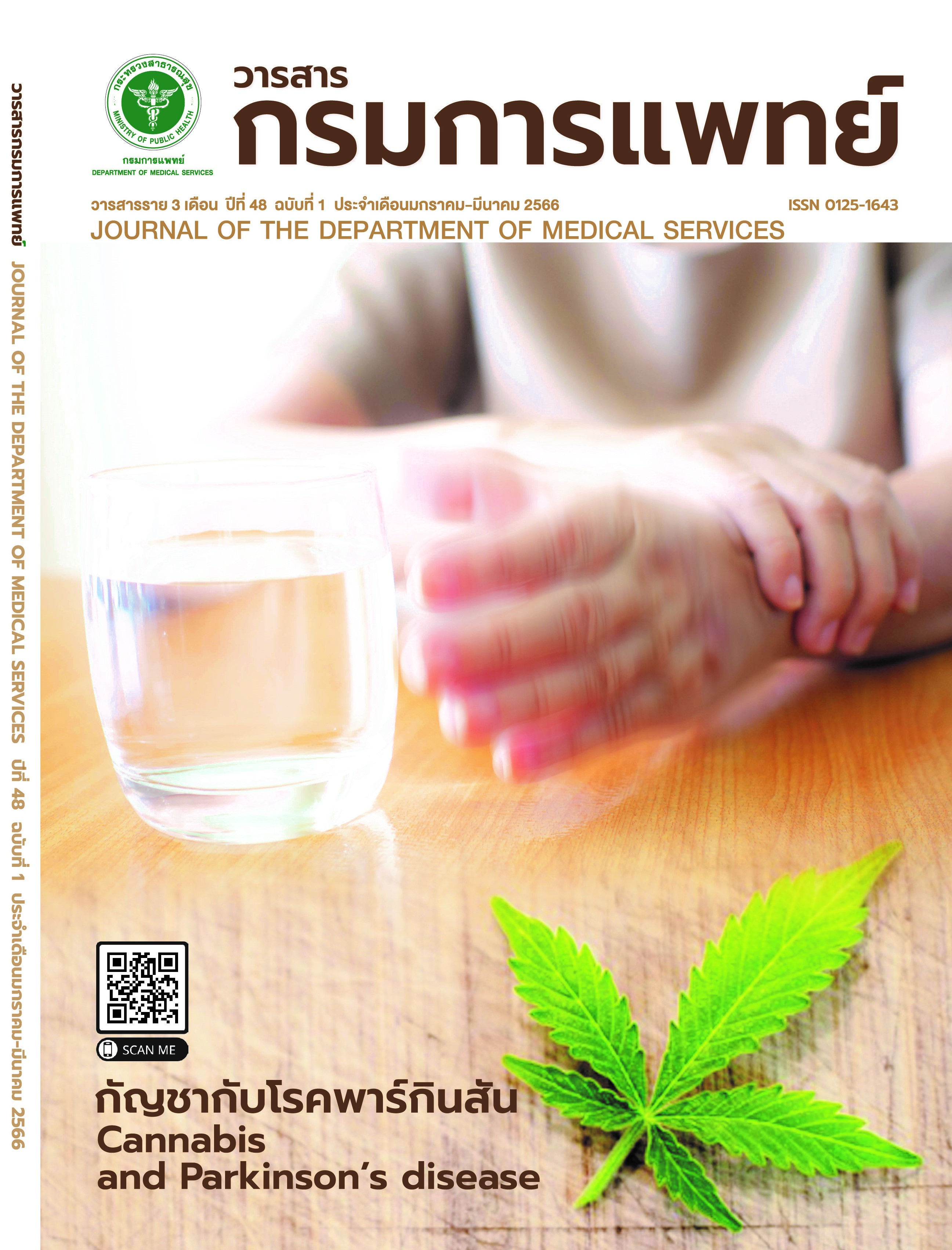The Invention of the Lead Cap from a Worn-out Lead Apron
Keywords:
Brain tumor, Cardiologist, Radiation dose, Radiatian lead capAbstract
Background: In the field of radiology, radiation protection equipment, such as a lead apron, is required. Whena leak occurs, it becomes unusable and is eventually discarded. A literature review has found that interventionalcardiologists who used digital subtraction angiography machines had an increased risk of brain tumors, especiallyon the left side of the brain. Neurological Institute of Thailand had some worn-out lead aprons; thus, they werereinvented into lead caps to use with the biplane digital subtraction angiography machine. Objective: 1) To inventa radiation lead cap from worn-out lead aprons. 2) To prevent radiation at physicians’ and medical personnel’sheads. 3) To be a role model for those interested in bringing worn-out lead aprons to be reinvented as radiationprotection equipment. Method: The lead caps were made from worn-out lead aprons, which had a lead equivalentof 0.5 mmPb. The performance test resulted in no radiation leaks. The radiation protection efficacy test was doneby attaching a nanoDot optically stimulated luminescence (OSL) dosimeter outside and inside the lead cap. Then,X-rays were simultaneously irradiated to the lead cap via a Biplane digital subtraction angiography machine. Result:The measurements of radiation outside the lead cap compared with those inside the lead cap showed that theradiation dose was reduced by more than 94 percent. The Wilcoxon signed ranks test value of the radiation doseoutside the lead cap compared to the dose inside the lead cap at all locations had a p-value of 0.001, which was astatistically significant result. Conclusion: The invented lead cap can protect against radiation and reduce the risksof brain tumors. Worn-out lead aprons can be reinvented as a radiation-shielding device.
References
Meemag W. Invention of radiation protection equipment in thedepartment of radiology. Nakhon Ratch Med Bull 2006; 30:S81-6.
Finkelstein MM. Is brain cancer an occupational disease ofcardiologists? Can J Cardiol 1998; 14:1385-8.
Barker DG. How signifcant are the risks from occupationalexposure to ionizing radiation?. Appl Radiol 1989; 18:19-21.
Kirkwood ML, Arbique GM, Guild JB, Zeng K, Xi Y, Rectenwald J,et al. Radiation brain dose to vascular surgeons duringfluoroscopically guided interventions is not effectively reducedby wearing lead equivalent surgical caps. J Vasc Surg 2018;68:567-71.
Roguin A ,Goldstien J, Bar O. Brain tumors among interventionalcardiologist: a cause for alarm? Report of four new cases fromtwo cities and review of the literature. EuroIntrevention. 2012;7:1081-6.
Roguin A, Goldstein J, Bar O, Goldstein JA. Brain and neck tumorsamong physicians performing interventional procedures. Am JCardiol 2013; 111:1368-72.
Mayr NP, Wiesner G, Kretschmer A, Bronner J, Hoedlmoser H,Husser O, et al. Assessment the level of radiation experiencedby anesthesiologists during transfemoral Transcatheter AorticValve Implantation and protection by a lead cap. PLoS One.2019; 14.
Kuon E, Birkel J, Schmitt M, Dahm JB. Radiation exposure beneftof a lead cap in invasive cardiology. Heart 2003; 89:1205-10.
Alazzoni A, Gordon CL, Syed J, Natarajan MK, Rokoss M, Schwalm JD,et.al. Randomized controlled trial of radiation protection witha patient lead shield and a novel, nonlead surgical cap foroperators performing coronary angiography or intervention. CircCardiovasc Interv 2015; 8.
Poosiri S, Thongseenuch S, Saisom S, Chanmanee N. Theinvention of natural rubber mixed with high loading bismuthfor radiation protection in diagnostic radiology. Thai J Rad Tech2019; 448-14.
Reeves RR, Ang L, Bahadorani J, Naghi J, Dominguez A,Palakodeti V, et al. Invasive cardiologists are exposed to greaterleft sided cranial radiation: The brain study (Brain radiationexposure and attenuation during invasive cardiologyprocedures). JACC Cardiovasc Interv 2015; 8:1197-1206.
Downloads
Published
How to Cite
Issue
Section
License
Copyright (c) 2023 Department of Medical Services, Ministry of Public Health

This work is licensed under a Creative Commons Attribution-NonCommercial-NoDerivatives 4.0 International License.
บทความที่ได้รับการตีพิมพ์เป็นลิขสิทธิ์ของกรมการแพทย์ กระทรวงสาธารณสุข
ข้อความและข้อคิดเห็นต่างๆ เป็นของผู้เขียนบทความ ไม่ใช่ความเห็นของกองบรรณาธิการหรือของวารสารกรมการแพทย์



